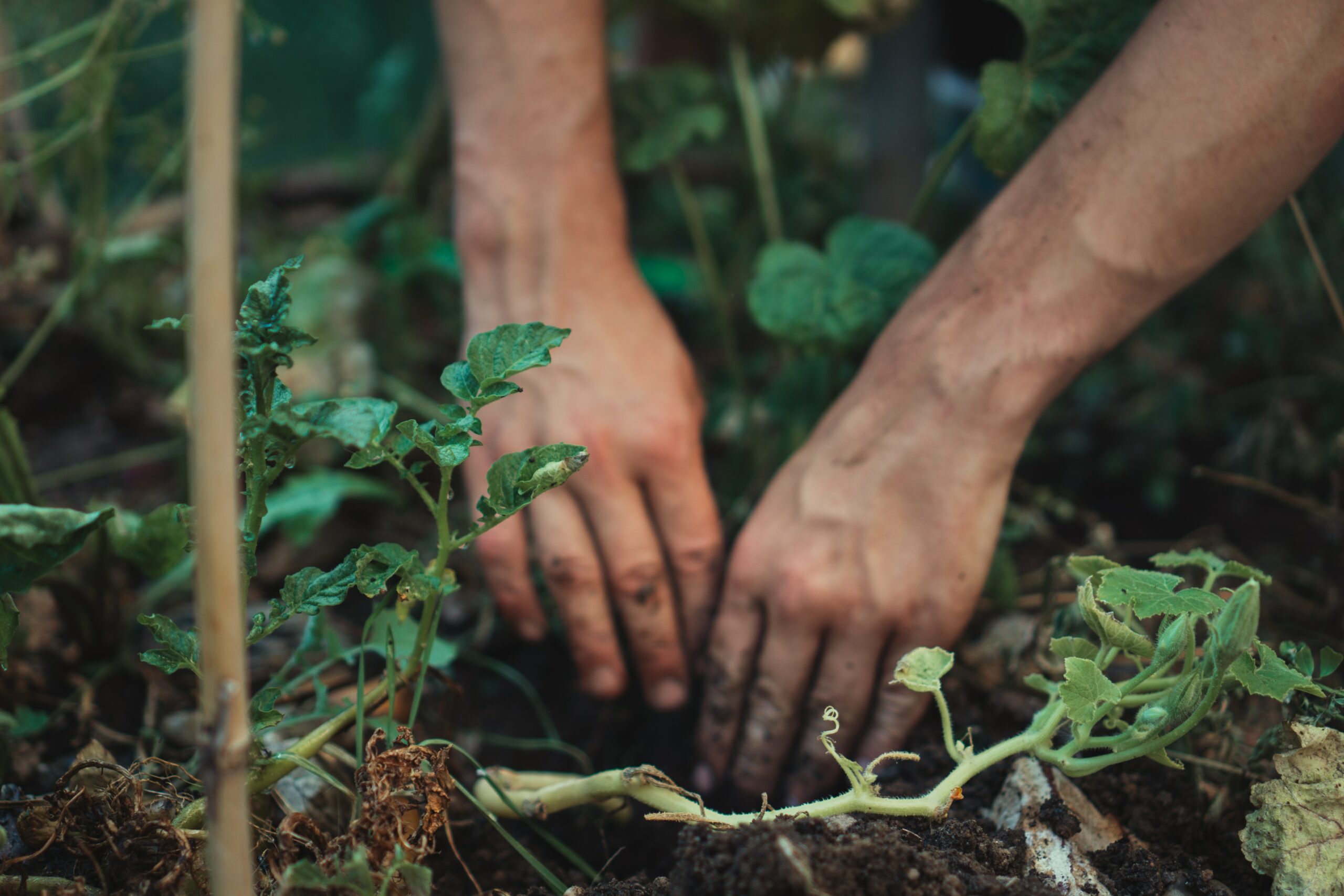If you love gardening and take pride in nurturing your plants, you might be unknowingly sabotaging your efforts by watering them at the wrong time. With the right watering schedule, you can encourage healthy growth and vibrant blooms. In this article, you’ll discover the common mistakes that gardeners make when it comes to watering and learn simple tips on how to fix them. Get ready to transform your garden into a thriving oasis by making a few adjustments to your watering routine.
Why watering your plants at the right time is crucial
Taking care of your plants involves more than just giving them water when they look thirsty. It’s important to understand the significance of proper watering and how it can greatly impact the health and growth of your plants. By watering your plants at the right time, you can ensure that they receive the optimal amount of moisture, helping them thrive and flourish. In this article, we will delve into the importance of proper watering, the effects of watering at the wrong time, common mistakes to avoid, the best times to water your plants, factors to consider when choosing the ideal watering time, signs of overwatering or underwatering, techniques to optimize plant growth through watering, smart watering practices for efficient water usage, tips for watering indoor plants, and debunking common myths about watering plants.
Understanding the importance of proper watering
Water is essential for the survival of plants as it helps transport nutrients and minerals from the soil to the various parts of the plant. Proper watering promotes healthy root development, photosynthesis, and overall growth. When plants don’t receive enough water, they can become dehydrated and wilt, stunting their growth and making them more susceptible to diseases and pests. On the other hand, overwatering can lead to root rot, oxygen deprivation, and other root-related issues. Therefore, it is crucial to strike a balance and provide your plants with the right amount of water at the right time.
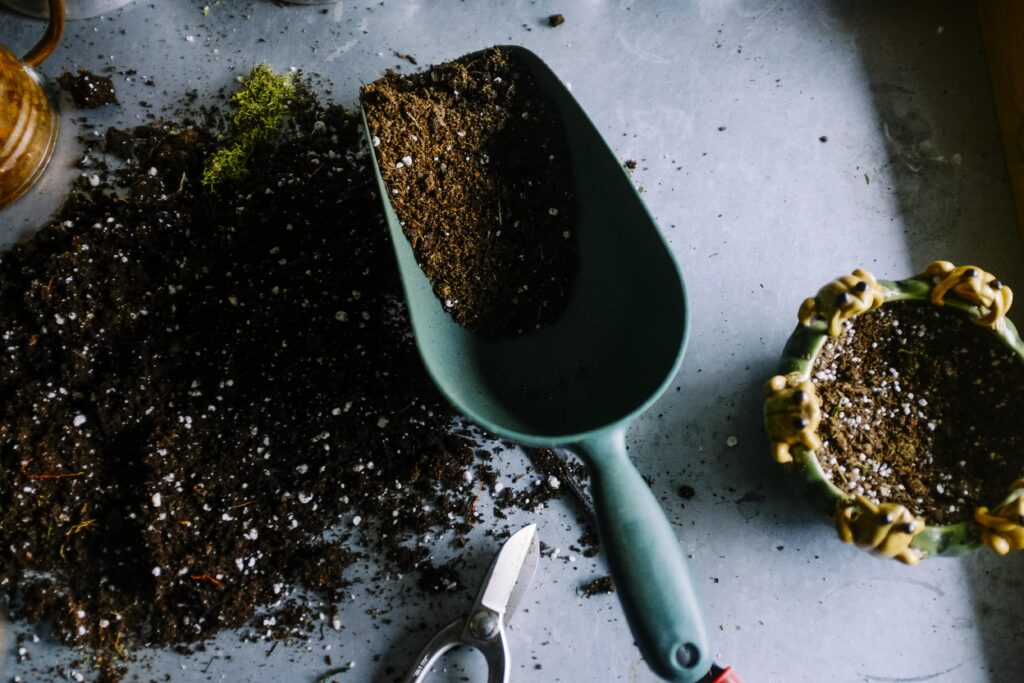
Effects of watering at the wrong time
Watering your plants at the wrong time of day can have negative consequences on their health and development. For instance, watering your plants during the hottest part of the day, such as midday, can cause the water to evaporate quickly due to high temperatures, resulting in inadequate moisture absorption by the plants’ roots. This can lead to their dehydration, wilting, and ultimately, their demise. Additionally, watering late in the evening can create a favorable environment for fungal diseases to develop, as the water tends to sit on the leaves and stems overnight, providing the perfect breeding ground for pathogens. Avoiding such timing mistakes is vital for the well-being of your plants.
Common mistakes made while watering plants
When it comes to watering plants, some common mistakes are often made unknowingly. One common mistake is using a sprinkler system, which distributes water to a wide area, including non-plant areas like walkways or structures, wasting water in the process. Another mistake is watering too frequently, thinking that plants always need to be moist. However, some plants prefer drier soil conditions and are prone to root rot if overwatered. Overwatering can also leach important nutrients from the soil, denying plants access to the nourishment they need. Lastly, not adjusting watering practices with seasonal changes can lead to poor plant health, especially during periods of excessive rain or drought. Being mindful of these mistakes and avoiding them will benefit your plants in the long run.
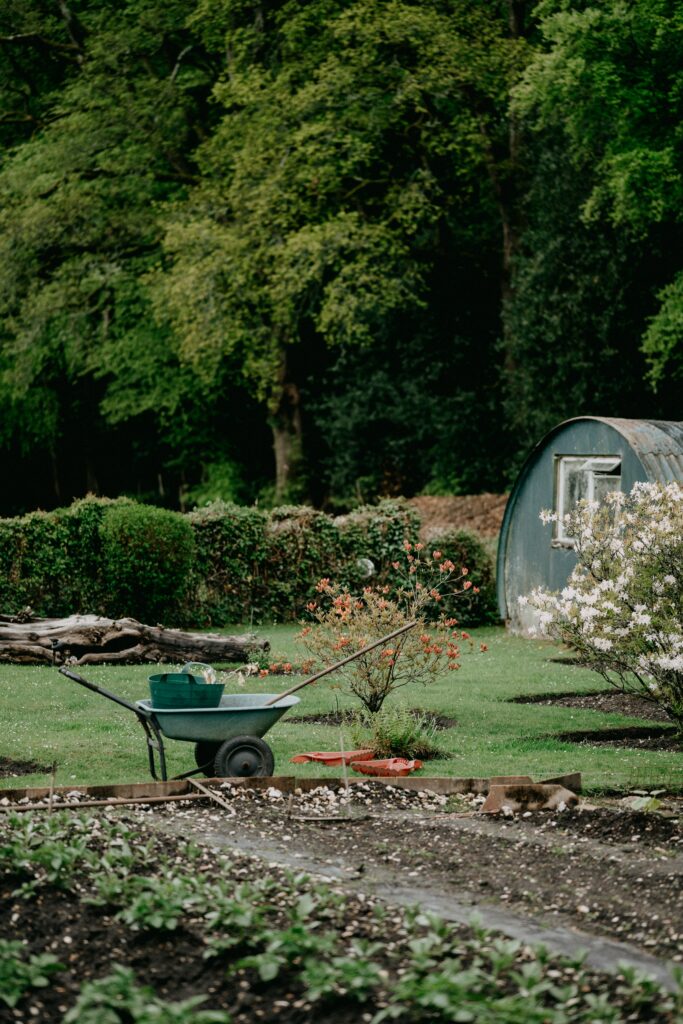
Best time to water your plants
The optimal time to water your plants depends on various factors such as climate, plant type, and soil conditions. The three time periods generally considered the best for watering are morning, afternoon, and evening. Let’s explore each of these options in more detail:
Morning watering
Watering your plants in the morning is often considered the best time for several reasons. Firstly, the temperatures are typically cooler during the morning, allowing the water to be absorbed by the soil before the sun’s heat causes excessive evaporation. Secondly, watering in the morning allows the plants to absorb the moisture throughout the day, promoting healthy growth. Lastly, any water that may accidentally get on the leaves has a chance to dry out in the sunlight, reducing the risk of fungal diseases.
Afternoon watering
Watering your plants in the afternoon can be effective in regions with extremely hot and dry climates. By providing them with an extra boost of water during the hottest part of the day, you can help prevent them from becoming dehydrated. However, it is important to avoid wetting the leaves to minimize the risk of sunburn or scorching caused by droplets acting as magnifying glasses for the sun’s rays. Therefore, the focus should primarily be on watering the root zone of the plants.
Evening watering
Watering your plants in the evening is generally not recommended, as it increases the likelihood of fungal diseases due to the extended period of time the leaves and soil remain wet. However, in certain cases, such as during prolonged heatwaves, evening watering can provide relief to the plants, preventing excessive stress from high temperatures. If evening watering is necessary, it is advisable to water at least a few hours before sunset to allow sufficient time for the leaves to dry before nightfall.
Factors to consider when choosing the ideal watering time
When determining the best time to water your plants, there are several important factors to consider. These factors include the climate and weather conditions, the type of plants and their water requirements, and the soil type and moisture retention capacity.
Climate and weather conditions
The climate and weather conditions in your region play a significant role in determining the best time to water your plants. In hot and arid environments, watering during the cooler periods of the day, such as in the morning or late afternoon, can help conserve water and prevent excessive evaporation. In more temperate or humid climates, watering in the morning or early evening can still be beneficial to avoid wet foliage during the night. Understanding your local climate will help you tailor your watering practices accordingly.
Type of plants and their water requirements
Different plants have varying water requirements, depending on their species, size, growth stage, and environmental conditions. Some plants, such as succulents and cacti, have adapted to drought conditions and require less frequent watering. On the other hand, plants with larger leaf surfaces or shallow root systems may need more frequent watering to prevent wilting. Researching the water needs and preferences of your specific plants will help you determine the best timing and frequency for watering.
Soil type and moisture retention
The type of soil you have in your garden can greatly affect water retention and drainage. Sandy soils tend to drain quickly, requiring more frequent watering, while clay soils retain water longer, allowing for less frequent watering. Conducting a simple soil test can help you understand your soil type and its moisture-holding capacity. Knowing how your soil behaves will guide you in adjusting your watering routine to ensure optimal moisture levels for your plants.
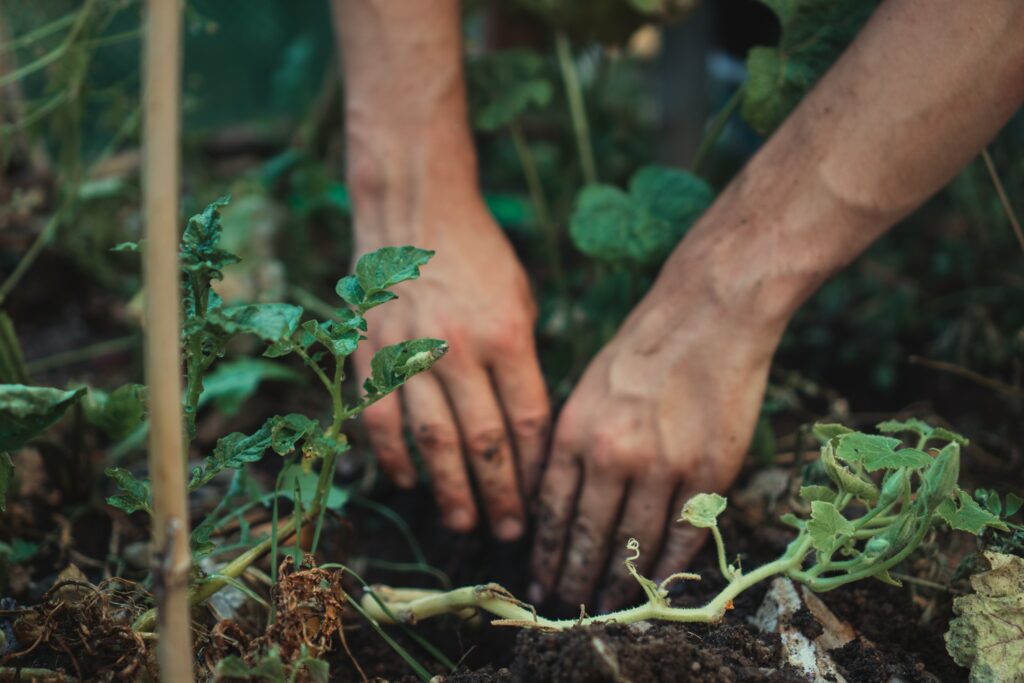
Signs of overwatering or underwatering
As a gardener, it’s essential to pay attention to the signs your plants exhibit, as they can indicate whether they are receiving too much or too little water. Here are some common signs of overwatering or underwatering:
Wilting or drooping leaves
Wilting or drooping leaves can be an indication of both overwatering and underwatering. Overwatering can lead to root rot, preventing the roots from effectively absorbing water and nutrients, resulting in wilting leaves. Underwatering, on the other hand, causes the plant to conserve water by drooping its leaves to minimize water loss through transpiration. Checking the soil moisture levels and adjusting your watering accordingly can help revive your plants.
Yellowing or browning of leaves
Yellowing or browning of leaves can also indicate both overwatering and underwatering. Overwatered plants often exhibit yellowing leaves as a result of nutrient deficiencies due to excessive water flushing away essential minerals. Conversely, underwatered plants may develop brown or crispy leaves as a way of conserving water. Regularly inspecting your plants’ foliage and adjusting your watering practices can address these issues.
Root rot or fungus growth
Overwatering can lead to waterlogged soil, creating the perfect conditions for root rot and fungal diseases to thrive. If you notice a foul smell emanating from the soil or see blackened, slimy, or mushy roots, it is likely that your plants are suffering from root rot. Additionally, the presence of mold or fungus on the soil’s surface or on the leaves can indicate excessive moisture and poor drainage. Proper watering practices, such as allowing the soil to dry between waterings and improving drainage, can help prevent these issues.
Watering techniques to optimize plant growth
In addition to watering at the right time, there are several techniques you can use to optimize plant growth through efficient water distribution. These techniques include deep watering, mulching, and using drip irrigation systems.
Deep watering
Providing your plants with deep watering encourages the development of a strong and healthy root system. Shallow and frequent watering can result in shallow root growth, making plants more susceptible to drought stress. Aiming for a slow and steady deep watering session allows the water to penetrate the soil deeply, encouraging roots to grow deeper in search of moisture. This not only improves plant stability but also enhances their ability to access nutrients.
Mulching
Mulching involves covering the soil surface around plants with a layer of organic material, such as wood chips, straw, or compost. Mulch acts as a protective barrier, preventing excessive evaporation and weed growth, while also aiding in moisture retention. By conserving soil moisture, mulching reduces the frequency of watering required and helps regulate soil temperature, resulting in healthier and more resilient plants.
Using drip irrigation
Drip irrigation systems deliver water directly to the plants’ root zones, ensuring efficient water usage and minimizing water loss through evaporation. These systems consist of tubes or hoses with small holes or emitters that release a steady and uniform flow of water. Drip irrigation allows for precise control over watering, preventing overspray and ensuring that water is delivered where it is needed most. This method is particularly effective in conserving water and reducing the risk of plant diseases caused by wet foliage.
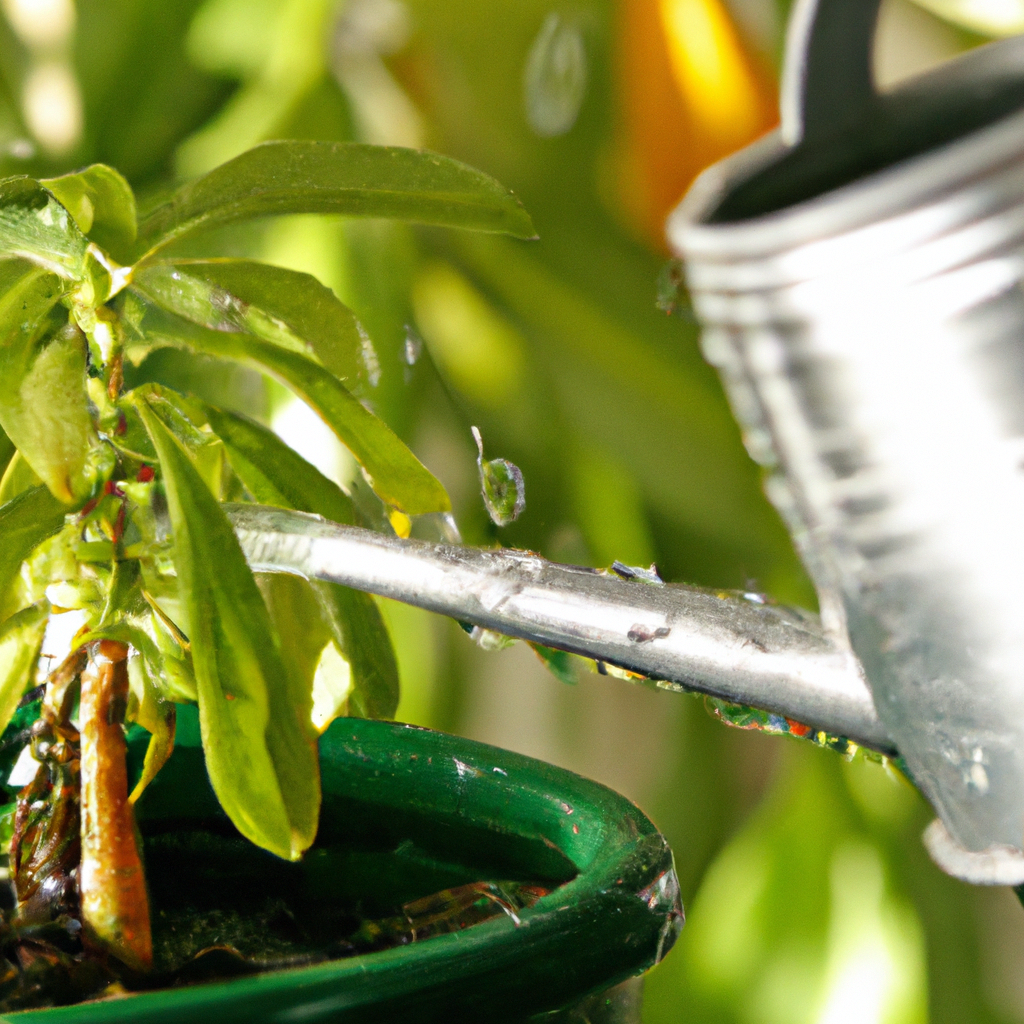
Smart watering practices for efficient water usage
Water is a precious resource, and using it wisely is crucial. By implementing smart watering practices, you can optimize water usage in your garden while still providing your plants with the necessary moisture they need to thrive. Consider the following practices:
Collecting and reusing rainwater
Installing rainwater collection systems, such as barrels or cisterns, allows you to harvest and store rainwater for later use in watering your plants. Rainwater is free from chemicals and contaminants found in tap water, and using it helps to conserve water and reduce your water bill. By capturing and reusing rainwater, you can lessen the strain on local water supplies and contribute to a more sustainable gardening practice.
Using a moisture meter
A moisture meter is a simple device that measures the moisture content of the soil, giving you a clear indication of when it’s time to water your plants. This tool takes the guesswork out of watering and helps prevent overwatering or underwatering. By monitoring the moisture levels, you can adjust your watering schedule accordingly, providing just the right amount of water when needed.
Grouping plants with similar water needs
By grouping plants with similar water requirements together, you can create more efficient watering zones in your garden. Plants with high water requirements, such as vegetables or water-loving flowers, can be grouped together in one area, while drought-resistant plants can be grouped separately. This practice allows you to tailor your watering regimen to each group’s needs, reducing water waste and ensuring all plants receive the appropriate amount of moisture.
Tips for watering indoor plants
Watering indoor plants requires a slightly different approach than outdoor plants. Here are some tips to help you effectively water your indoor plants:
Watering frequency for indoor plants
The frequency of watering indoor plants depends on various factors, including the specific plant species, pot size, and humidity levels in your home. Research the water requirements of each indoor plant in your care to determine how often they should be watered. It’s important to avoid overwatering indoor plants, as the excess water can lead to root rot and other related issues. Testing the soil moisture with a finger or moisture meter can help you gauge when it’s time to water.
Importance of good drainage
Indoor plants should be potted in containers with proper drainage holes to ensure water can freely escape. Excess water that accumulates in the bottom of the pot can lead to root rot and other problems. Place a saucer or tray beneath each pot to catch any excess water that drains out. Empty the saucer or tray after watering to prevent the plant from sitting in water, which can cause root suffocation.
Humidity and misting
Indoor environments can sometimes be dry, especially in heated or air-conditioned spaces. Some indoor plants thrive in higher humidity levels, and misting their leaves can help mimic their natural habitat. Use a spray bottle filled with water to lightly mist the leaves, being careful not to overdo it. Misting can also help remove dust buildup, allowing the plants to better absorb sunlight and breathe.
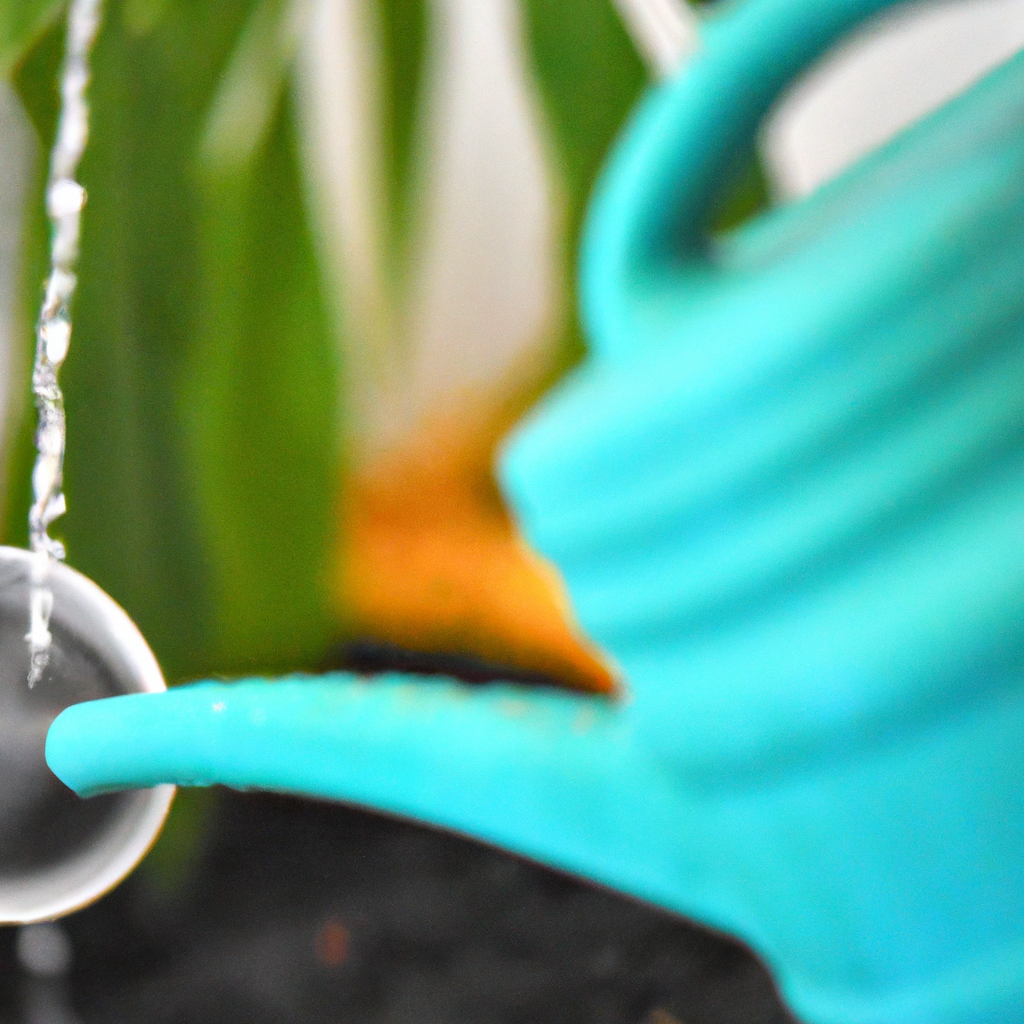
Common myths about watering plants debunked
There are several misconceptions when it comes to watering plants that can lead to incorrect practices. Let’s debunk some of the common myths:
Plants need daily watering
Contrary to popular belief, not all plants require daily watering. Each plant has unique water requirements based on factors such as species, size, growth stage, and environmental conditions. Some plants, such as succulents and certain drought-tolerant perennials, have adapted to survive with less frequent watering. Overwatering can do more harm than good, so it is crucial to research and understand the specific water needs of your plants before establishing a watering routine.
Watering in the evening causes diseases
While it is generally recommended to avoid watering in the evening, it is not solely responsible for causing diseases. Watering in the evening can increase the risk of fungal diseases if the foliage and soil remain wet overnight. However, during excessively hot and dry periods, watering in the evening can provide much-needed relief to the plants. The key is to water the plants at least a few hours before sunset to allow time for the leaves to dry before nightfall.
Watering leaves leads to sunburn
Watering the leaves of plants does not cause sunburn, as long as it is done during the appropriate time of day. Water droplets on plant leaves can act as tiny lenses, focusing sunlight and potentially causing burn marks. However, when watering in the morning, the sun’s intensity is usually lower, reducing the risk of sunburn. Additionally, if the foliage can dry quickly, the chances of sunburn are further minimized.
Conclusion
Proper watering is an essential element of successful gardening, and understanding the importance of watering your plants at the right time is crucial. By considering factors such as climate, plant type, and soil conditions, you can determine the best times to water your plants. Avoid common watering mistakes and be aware of signs of overwatering or underwatering. Implement watering techniques such as deep watering, mulching, and drip irrigation to optimize plant growth. Practice smart watering habits by collecting rainwater, using moisture meters, and grouping plants with similar water needs. When caring for indoor plants, pay attention to watering frequency, ensure proper drainage, and consider humidity levels. Finally, debunk common myths about watering to ensure you are providing your plants with the optimal care they need to thrive. So, take the time to water your plants at the right time, and watch your garden flourish with health and vitality.
